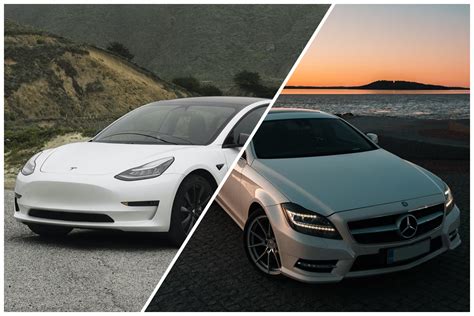In a world where self-driving technology is rapidly evolving, the comparison between Tesla’s Full Self-Driving (FSD) and Mercedes’ Driver Assist has sparked a heated debate. The comments from users shed light on various aspects of these technologies, ranging from performance to accountability in case of accidents. Some users argue that while Tesla’s FSD may seem advanced, Mercedes’ cautious approach with Driver Assist offers a different perspective on safety.
One user highlighted the importance of accountability in the event of accidents, stating that manufacturers who have faith in their self-driving systems should be willing to accept legal liability for their actions. This raises crucial questions about the ethical and legal implications of autonomous vehicles. As the technology progresses, ensuring the safety of passengers and pedestrians remains a top priority for manufacturers.
The discussion also touched upon the significant investment by Tesla in machine learning (ML) for training their autonomous systems. With billions of miles of training data and a vast network of vehicles, Tesla has positioned itself as a frontrunner in the race towards fully autonomous driving. However, concerns were raised about the reliance on visual sensors over Lidar and radar technologies, which some argue could limit Tesla’s capabilities in certain scenarios.
While Tesla continues to enhance its self-driving capabilities, the debate over different approaches to autonomous vehicles persists. From the engineering rigor of Mercedes’ systems to the market disruption potential of Tesla’s innovations, the road to fully autonomous driving is filled with challenges and opportunities. As technology enthusiasts and consumers, understanding the nuances of self-driving technologies allows us to envision a future where road safety and innovation go hand in hand.
The diverse perspectives shared by users in the comments section underscore the complexity of the self-driving technology landscape. From concerns about intervention rates and software updates to the role of human oversight in autonomous vehicles, each opinion offers a unique insight into the ongoing debate. As advancements in AI and automation reshape the automotive industry, the quest for safer, more efficient transportation solutions requires a delicate balance between innovation and accountability.
In conclusion, the comparison between Tesla and Mercedes serves as a microcosm of the broader discussions surrounding self-driving technologies. While both companies strive to push the boundaries of innovation, their approaches and philosophies differ significantly. Whether it is the level of autonomy, data collection practices, or safety protocols, the evolution of autonomous vehicles will continue to captivate the industry and consumers alike. As we navigate towards a future where cars drive themselves, the journey is as important as the destination.


Leave a Reply